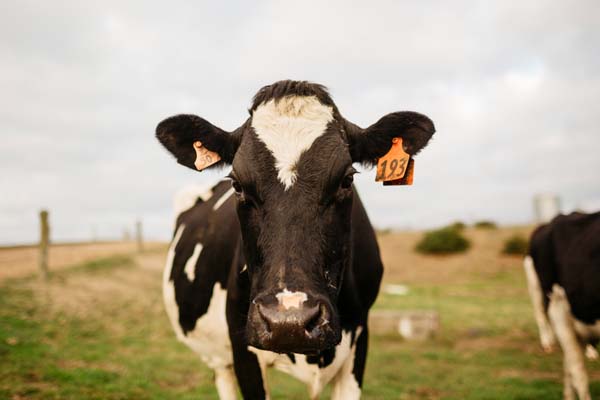Traceability starts at home
With the dairy and beef market both looking positive for 2025, beef finishers will be looking for quality dairy beef genetics to buy. The proof behind those genetics starts with an ear tag. Words Sheryl Haitana.

IN PARTNERSHIP WITH MSD
A dairy beef animal can be sold multiple times in its lifetime. From a four-day old calf leaving the dairy farm, through to the beef finisher.
The link back to the genetics and the journey of that animal is the tag that is put in that animal’s ear on the day it’s born.
“Things are looking pretty positive for both sides – dairy and beef this year, it doesn’t always align like that,” MSD Sales Lead Chris Jennings says.
“These dairy beef animals, depending on the contracts, can change hands two or three times. Every movement needs to be recorded and tracked.
“The ability to identify and trace those movements comes down to that EID ear tag that sits in the calf’s ear from the beginning. Connectivity starts with the tag.”
With genetics and DNA testing being taken up by more farmers, they still need to be able to record that data against something, he says.
“Data is driving all the decisions farmers are making these days; there is more data available today than there has ever been. But in order to elicit that data it needs to be tracked or recorded against something.”
For as many farmers are DNA testing, there are many that are not and so the traceability is dependent on an ear tag.
“The ability to trace animals is so important to New Zealand’s economy, in the event if something did go wrong we can isolate and contain them really really quickly.”
The biosecurity concerns New Zealand has seen in the past several years with Mycoplasma bovis, has emphasised the importance of having NAIT, Chris says.
“The ability to trace animals is so important to New Zealand’s economy, in the event if something did go wrong we can isolate and contain them really really quickly.
“The ability to do that starts with that ear ID, hence the added importance of a durable, readable tag that lasts,” he says.
“At Allflex we are really proud of our tags that have been designed to survive the tough New Zealand pastoral conditions.”
The tags are marked with Allflex’s patented LaserPlus (jet black) marking to make them easily readable. The UV-stabilised material is designed to ensure sustainability and avoid fading. The swivel collar allows the tags to automatically find their centre of gravity meaning it is less prone to snagging.
“The tags are designed to break under tension before it rips an animal’s ear.”
For farmers who order their Allflex tags before 30 April, 2025 their NAIT levy fee will be paid by Allflex. This offer has been running since 6 January, 2025, so place your order today and you will save $0.97 per NAIT tag.
Terms and conditions apply.*
*Visit allflex.co.nz/early-bird





